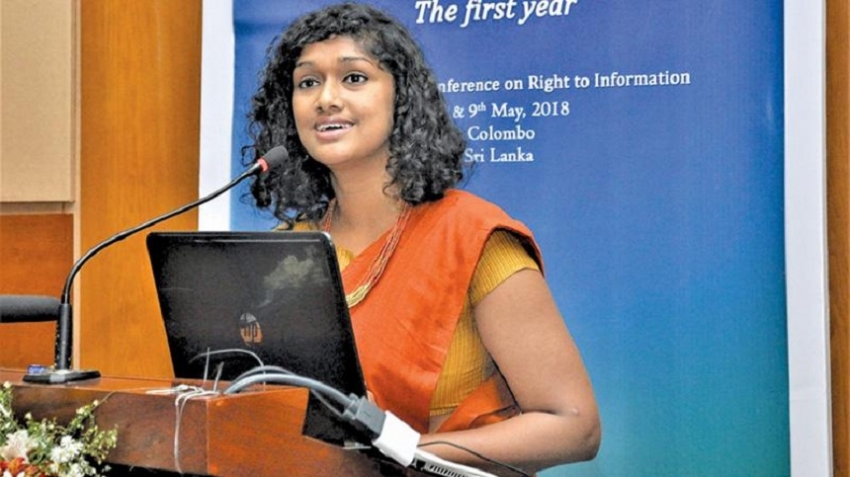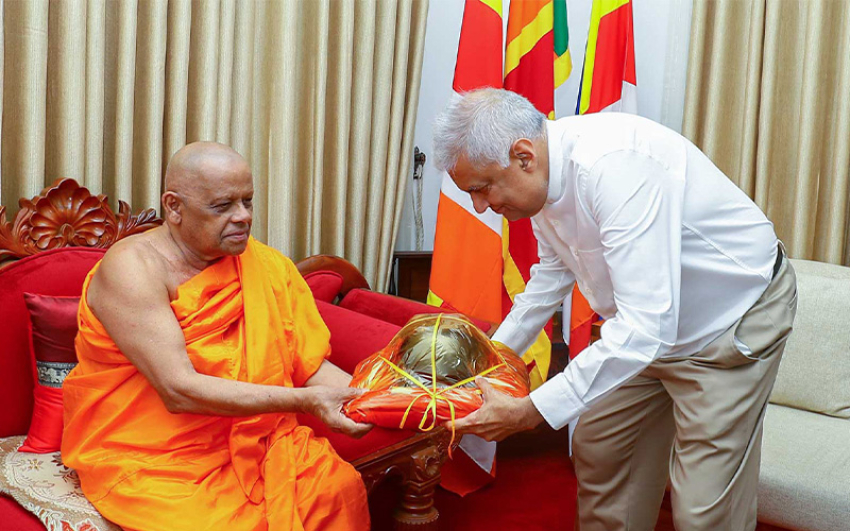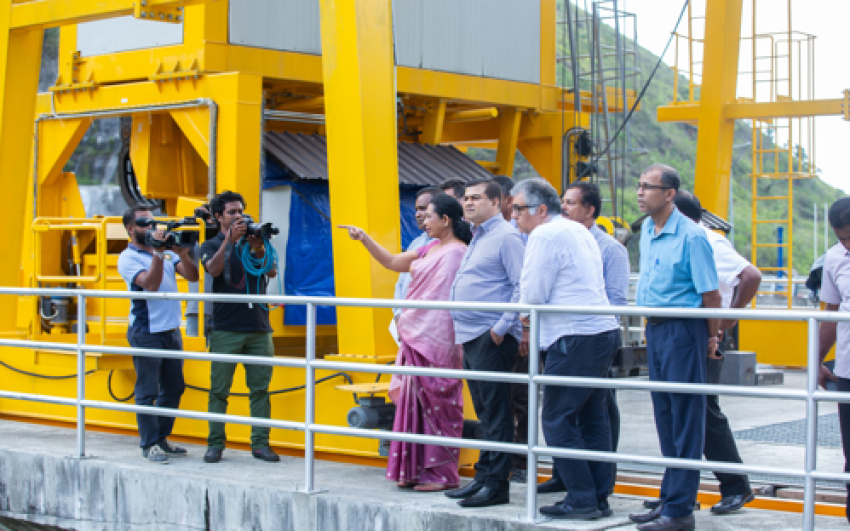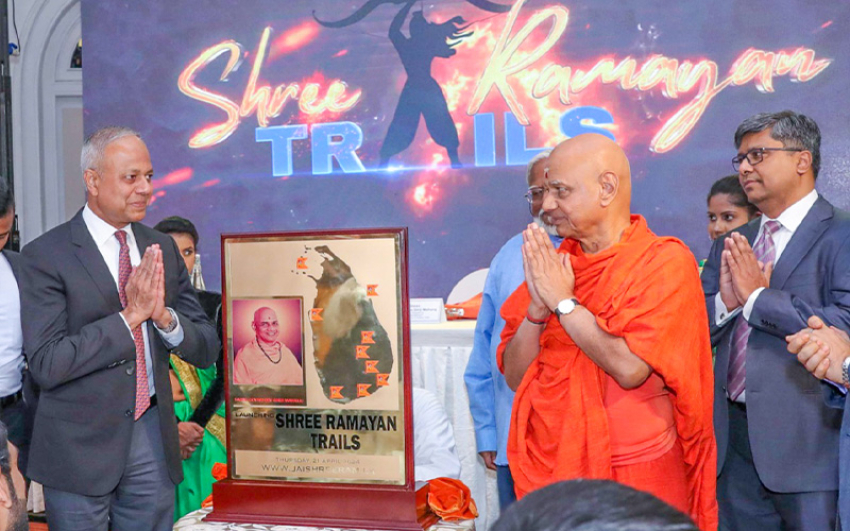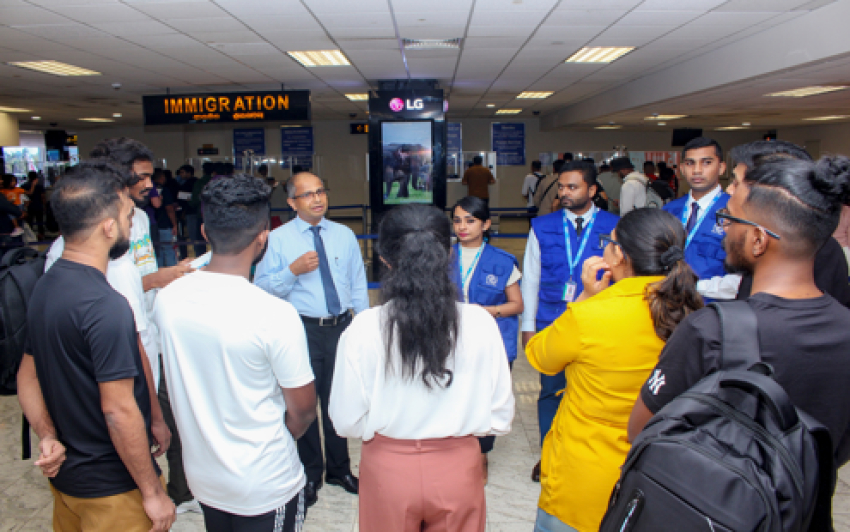Sankhitha Gunaratne is one of latest Chevening Scholars from Sri Lanka, chosen to pursue a higher degree in the United Kingdom. She will be reading for an MA in Corruption and Governance at the University of Sussex. In this interview with Nalaka Gunawardene, she looks back at RTI implementation so far and takes stock of the remaining challengesSeptember 28 marks the International Day for the Universal Access to Information designated by UNESCO. It celebrates the right to information or RTI, which was added to the Constitution of Sri Lanka as a fundamental right in April 2015 and later supported by the Right to Information Act No 12 of 2016.
Before and after the law was passed, Attorney-at-Law Sankhitha Gunaratne has been at the forefront in promoting RTI. As Program Manager for RTI at Transparency International Sri Lanka (TISL), she has helped train hundreds of public officials on RTI compliance and facilitated over 2,100 citizens to file RTI applications with a wide range of public bodies. In 2016, she was part of the RTI Advisory Task Force to the Ministry of Mass Media which helped the Ministry plan the implementation of the RTI Act that came into effect in February 2017. Earlier, she was also a member of the TISL legal team that intervened with the Supreme Court in support of the RTI Bill after it was gazetted.
Q: Sri Lanka’s RTI Act, together with regulations, have been assessed and ranked highly by the Centre for Law and Democracy (CLD) that compiles Global RTI Ratings. What is your assessment of our RTI law and regulations?
I agree that we have a very strong legal regime. As a country that enacted the law quite late, we have used all the experience of the region to formulate a good system.One of the key features of this law, is that it resets the power imbalance between the State and the individual citizen. Information is often the capital that the State has, that shuts citizens out of meaningful participation and any demand of true accountability.
The law normalises the idea of accountability, specifically removing the need for citizens to give reasons for an information request. It captures any information that is on record. It further operates on the principle of maximum disclosure, always prioritizing the public interest even where some harm may be caused to privacy, national security, or other interests – where the overriding public interest can be demonstrated.
There are a few things that could have been better. For example, the way the Commission is set up could have envisaged provincial commissions. All persons – and not just citizens – could have been included as being able to file RTIs.
However, as TISL stated before the Supreme Court in the Bill Determination, the law is an excellent piece of legislation that I and my organisation unequivocally support. Its full implementation is what we need now.
Q: Having a fine law is not sufficient – the real test is in implementation. On the RTI ‘supply side’, what is working well and what needs to improve?
It has been difficult to assess implementation of the RTI law in Sri Lanka. So far, we have hundreds of success stories from RTI users. People have begun using RTI to hold the state accountable, and to expose acts of corruption, inefficiency and abuse of power and process. And as a country that is in the initial stages of implementation, we must congratulate ourselves on the progress made.
But even as we hear these stories, we must be conscious of the fact that success is not the experience of all RTI users. A lot of the success stories have required citizens to go the extra mile and follow up on the RTI – because acknowledgments are not received, notices are not sent, or timelines are not adhered to. This means people have to keep appealing, all the way to the Commission level at times. Those who do not know that entire process are then lost in the system, thinking that this is yet another tool that does not really work.
Two and a half years into RTI being operationalised, TISL was able to conduct an implementation assessment in 2019, to measure how well we are performing in three assessment areas – proactive disclosure, institutional measures and responding to requests. The assessment has shown the positive elements in the supply side. Most public authorities have appointed information officers, and the district and divisional level authorities are performing well in RTI implementation.
Q: You have been a promoter, trainer and user of RTI in the public interest. Where TISL’s RTI applications are concerned.What is the overall experience with public authorities?
What we have found is that TISL’s RTIs are sometimes responded to with more attention that certain individual citizens’ requests. Moreover, public institutions in the lower administrative level are more likely to respond positively than are central agencies – this may also be due to the types of information requested.
We have found that RTI is an invaluable tool in buttressing all of our advocacy efforts – be it to support any complaints to authorities, or even in forming our own opinions on certain issues.
As RTI trainers, we have in most instances found public officials to be quite receptive. Often, the young ones are more open to the principles behind RTI, while the older tend to see it as an extra workload. However, most officials take their duties under the law very seriously, struggle with the practical angles – such as keeping count of the various timelines, not knowing where to find the information and sometimes not receiving assistance from their colleagues.
Q: As an NGO, TISL is covered by the RTI Act to the extent its activities are supported by public funds, local or foreign. How is TISL compliant with the RTI law?
We have our own information officer and designated officer, who function separately from each other. TISL has received RTI requests, all of which were responded to positively, where the information related to our public activities, as prescribed by the law. In certain instances, we gave information even where we were not bound to do. We have also made our funding publicly available on our website, as this is one of the key questions people often have about NGOs.
Q: What have been your main accomplishments in promoting RTI through TISL?
Soon after the law was passed, TISL began carrying out programs with other civil society organisations and directly, to raise awareness on RTI. We also set up what we call ‘RTI hubs’ in eight districts. We helped citizens to file RTI requests and helped them through the appeal stages where necessary, even appearing for them before the RTI Commission.
We also committed ourselves to working in the villages in the local languages, encouraging people to address community issues through RTI. By now, over 2,100 citizens have filed RTIs with our assistance, 45% of them women. My role has been to oversee all these programs.
Q: On the ‘demand side’ of RTI, what are your impressions based on your engagement with citizens and their various groups?
My main observation is that people out of Colombo are using RTI much more than those in and around Colombo. This may be due to the fact that many citizen services in metropolitan areas are already provided.
When you look at the nature of these RTIs – be it on road construction, government appointments, transport, medical services and education – it seems to point to a service-delivery failure by the State. This means that citizens have turned to a tool that is currently working, to address parts of the system that are not working. While this system is effective, it is clear that sweeping changes are required to fix the problems that these RTIs have begun to highlight.
It is also interesting that the first question that most people ask upon being introduced to RTI is whether they could get into trouble for using it. While the reasons for these fears may be historical and complicated, it shows that a lot needs to be done to change this mind-set from one of challenging authority, to one of a casual accountability. This can only happen if the recipients of requests too see it less as an attack and more as a query.
Q: What strategies are needed to fill gaps in public awareness and understanding of the RTI process?
One of the best ways to do this is to ensure that all public officials understand RTI and use it as a normal means of communication with its stakeholders. It is easier to train the public service than to attempt to reach all citizens in the country, in the short term.
Imagine a public authority that makes all its service-delivery information publicly available, routinely updates its notice board on recent decisions taken and regularly opens its doors to citizens treating, each query as an RTI request.
If a certain query keeps arising, the public authority immediately fixes the problem and makes that information available – using the RTI requests to point to an issue in their own workings.
This is what we want to achieve in the short term. While this may seem utopian, it is no less than the law requires. This requires ongoing training not just for information officers, but for the entire public service.
For the moment, we are using RTI success stories to publicize its effectiveness. Another step to take, is to identify and celebrate the users themselves. This would have a snowball effect, where they would become influencers in their community, with added recognition.
Q: There have been instances where citizens seeking information from public authorities have been threatened or intimidated. What protection do you advocate for RTI users?
Where a citizen feels that there may be a threat, one of the main strategies we recommend is to file the RTI as a group. It is much harder for an errant official to target a group.
Wherever there has been such threats or intimidation, India has used an interesting strategy of immediately making sure that the information that was being sought, is made public. This acts as a disincentive to officials who may want to target people.
If something like this happens, the first recourse should be to the RTI Commission, who has the power to recommend disciplinary action or prosecute. The Commission must take a firm stand in such instances. In addition to this, users could also seek assistance from the Victim and Witness Protection Authority
Q: What is your experience with the RTI Commission? Is the Commission tough enough on errant/evasive public officials?
The Commission has in the majority of cases held in favour of the citizen, ordering public authorities to release information. Having said this, there are many instances where public authorities are given several opportunities to appear, even where they have disregarded the Commission’s dates. Given the amount of time between hearings, this causes major inconvenience to requesters who have already had to wait close to a year to get to this stage of appeal. In such instances, the Commission should make ex-parte decisions.
The Commission has stated that they are in the process of formulating rules regarding prosecutions for errant officials. This is an important aspect of RTI that ensures compliance with the framework. It is vital that these provisions are put into effect soon, in order to demonstrate the State’s commitment to RTI.
The Commission has responded to complaints against certain authorities or officials very seriously, asking them to show cause. In general, the Commission has been a proactive and responsive body, making bold and principled decisions, going so far as to hold regional hearings and publishing important works, to keep abreast of changing needs. It is important to assure the Commission’s independence and autonomy for the years to come.
Q: Where do you wish to see Sri Lanka’s RTI process in five and 10 years’ time?
In five years, I would like to see RTI normalised across the State and among citizens. This requires that the initial enthusiasm for RTI implementation is sustained and grown. Greater resource allocation towards implementation would be a key indicator of such commitment.
There should ideally also be a net reduction in RTI appeals as the first request level becomes more used to RTI compliance. In the short term, the number of RTIs filed per annum, should also increase, indicating a rise in awareness among citizens. Within this period, I would caution against any amendments to the RTI Act, whether such amendments are touted as being improvements, or not.
In the longer term, I would like to see a reduction in the need for formal RTIs, as proactive disclosure becomes more the order of the day within public institutions.

